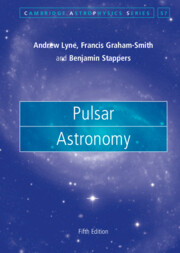Book contents
- Frontmatter
- Contents
- Preface
- Part I Discoveries and Techniques
- 1 The Discoveries
- 2 Telescope Techniques, Radio to TeV
- 3 Receiver Techniques and Data Analysis
- 4 Surveys and Population
- 5 Pulsar Timing
- 6 Timing and Astrometry of Binary Pulsars
- 7 The Distances of the Pulsars
- Part II Observed Physical Characteristics
- Part III Neutron Star Physics
- Part IV Environments and the Interstellar Medium
- References
- Index
6 - Timing and Astrometry of Binary Pulsars
from Part I - Discoveries and Techniques
Published online by Cambridge University Press: 21 July 2022
- Frontmatter
- Contents
- Preface
- Part I Discoveries and Techniques
- 1 The Discoveries
- 2 Telescope Techniques, Radio to TeV
- 3 Receiver Techniques and Data Analysis
- 4 Surveys and Population
- 5 Pulsar Timing
- 6 Timing and Astrometry of Binary Pulsars
- 7 The Distances of the Pulsars
- Part II Observed Physical Characteristics
- Part III Neutron Star Physics
- Part IV Environments and the Interstellar Medium
- References
- Index
Summary
The majority of millisecond pulsars are in binary systems with white dwarfs or other neutron stars. Precision timing yields remarkably accurate orbital parameters and their evolution. Binary systems provide tests of relativistic effects including energy loss by gravitational waves.
Keywords
- Type
- Chapter
- Information
- Pulsar Astronomy , pp. 90 - 104Publisher: Cambridge University PressPrint publication year: 2022

